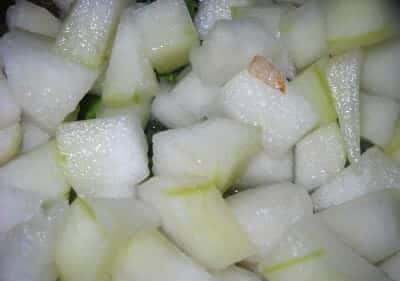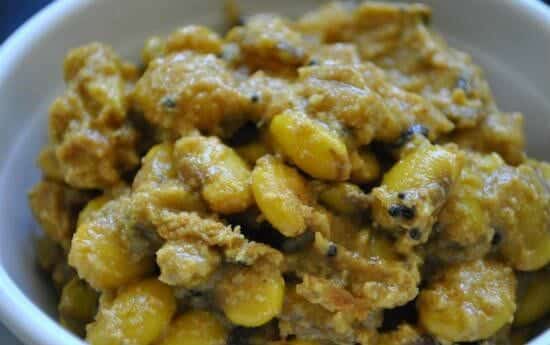Seppankizhangu Roast, also known as Colocasia Roast, is a delicious and flavorful South Indian dish perfect for a side or a snack. This recipe transforms humble colocasia into a crispy and spicy delight that pairs beautifully with steamed rice or as an appetizer.
The process begins by boiling the colocasia until tender, then marinating them in red chilli powder, turmeric powder, coriander powder, and tamarind extract. This combination of spices infuses the colocasia with a rich and tangy flavour.
The key to achieving the perfect Seppankizhangu Roast is frying the marinated colocasia in hot oil until they turn crispy and golden brown. Tempering mustard seeds, urad dal, curry leaves, and dry red chillies adds an aromatic touch to this dish.
Serve this Seppankizhangu Roast piping hot with steamed rice for a delightful meal satisfying your taste buds. It’s a beautiful dish for anyone looking to explore the diverse and flavorful world of South Indian cuisine.

Seppankizhangu Roast

Seppankizhangu Roast
Ingredients
- 750 gms Colocasia (Seppankizhangu/Chembu/Arvi)
- 3/4 cup Oil
- 2 tsp Red Chilli Powder
- 2 tsp Coriander Powder
- 1/2 tsp Turmeric Powder
- 1/2 to 1 cup Tamarind Extract
- Salt (as per taste)
- 1 tsp Mustard Seeds
- 2 tsp Urad Dal
- Few Curry Leaves
- 2 Dry Red Chillies (broken)
Instructions
- Boil the colocasia (seppankizhangu), peel the skin, and cut them into small pieces.
- Transfer the pieces to a mixing bowl.
- Add red chilli powder, turmeric powder, and coriander powder.
- Sprinkle a bit of salt and mix well until evenly coated. Let it sit for 10 to 15 minutes.
- Heat oil in a pan over medium flame.
- Fry the mustard seeds, urad dal, and red chillies for 30 seconds.
- Add curry leaves, marinated colocasia pieces, and tamarind extract.
- Increase the flame to high and cook, stirring occasionally, for 5 to 10 minutes until the colocasia pieces turn crisp and the moisture evaporates.
- Remove from the flame and serve the Seppankizhangu Roast hot with rice.
Sign up for our newsletter
Seppankizhangu, known as colocasia in English, is a popular tuberous vegetable in various Indian cuisines. In Kannada, it is referred to as “seppankizhangu,” while in Hindi, it is known as “arbi.” The Tamil name for colocasia is “seppankilangu,” and in Telugu, it is called “seppankizhangu” too, just like in English.
Frequently Asked Questions (FAQ):
What is the best way to peel colocasia for this recipe?
The best way to peel colocasia is to boil them until tender. After boiling, the skin can be easily removed by gently rubbing it with your fingers.
Can I make this recipe less spicy?
Absolutely! You can adjust the spiciness by reducing the red chilli powder used in the marinade. Start with a smaller quantity and add more if needed.
What are some suitable pairings for Seppankizhangu Roast?
Seppankizhangu Roast pairs wonderfully with steamed rice or can be served as a crunchy snack. If you enjoy this dish, you might also like other South Indian favourites like Sambar or Coconut Chutney.
Can I store leftover Seppankizhangu Roast?
You can store leftovers in an airtight container in the refrigerator for a day or two. Reheat it in the oven or stovetop for a crispy texture before serving.
Is colocasia the same as taro root?
Yes, colocasia is often referred to as taro root. They are similar in appearance and can be used interchangeably in many recipes.
“Image is only for illustrative purposes and not that of the actual recipe”










